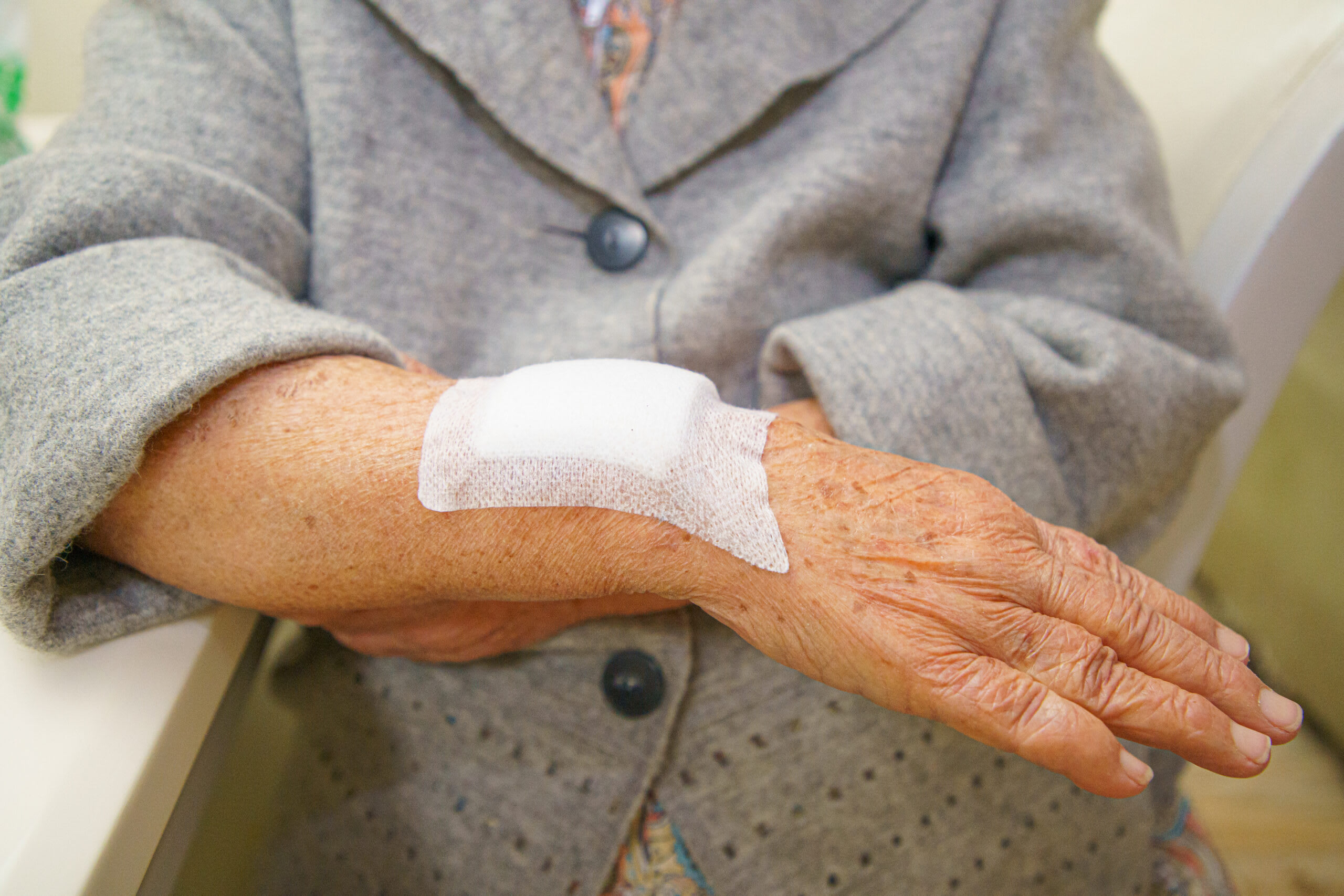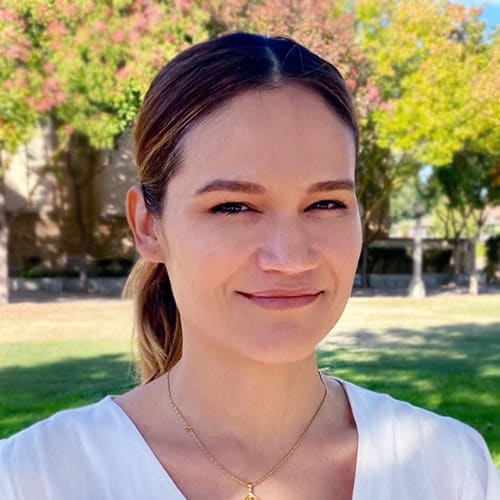
Elderly Skin Bruising: Causes, Prevention, and When to Be Concerned

Aging skin can become more sensitive and bruise easier, which might also lead to increased pain. Bruises, also called contusions, occur when trauma damages or ruptures blood vessels beneath the skin. Elderly skin bruising can be the result of an injury due to a fall or collision, but it can also be caused by nutrient deficiencies or medication. Some types of elderly skin bruising are harmless, but some can indicate a more serious problem. Here, we discuss the different types of bruising common in seniors, how to prevent them, and when they may need medical assistance.
Let our care assessment guide you
Our free tool provides options, advice, and next steps based on your unique situation.
Key Takeaways
- Bruising is more common in seniors because their skin is more frail due to aging-related nutrient deficiencies.
- Certain medications can also make seniors bruise more easily, so check side effects of medications to see if that’s the cause.
- Chronic disease and clotting disorders can also cause frequent bruising, so it’s important to try to get such conditions under control.
- Elder abuse is sadly also a possible cause of bruising in seniors, so make sure to always enquire about a senior's bruises.
Why do elderly adults bruise easily
Bruising in seniors is primarily caused by the skin’s reduced thickness and resilience due to certain conditions of aging. As we age, skin cells don’t reproduce as quickly as before. This can result in thinner layers of skin and the loss of protective connective tissue, making veins and capillaries more open to damage. The aging process might also involve a higher intake of medications and a reduction in the ability to absorb nutrients. This also makes the skin more vulnerable to bruising.
Elderly skin can also struggle to maintain adequate moisture levels, causing a loss of elasticity. With this, the skin’s ability to mend itself gradually decreases due to nutrient deficiencies, making even small wounds, like bruises, heal slower. When the cushioning effect provided by natural fat and moisture levels is diminished, blood vessels are more susceptible to damage.

Let our care assessment guide you
Our free tool provides options, advice, and next steps based on your unique situation.
Causes of elderly skin bruising
There are numerous factors that can increase the susceptibility of seniors to bruising. Knowing these causes can provide caregivers with vital information to manage and prevent excessive bruising in their loved ones.
Here’s a list of common causes or contributors to bruising in the elderly:
- Falls and accidents. One of the most common causes of bruises in seniors is accidental falls. Aging can affect balance and mobility, making older adults more prone to falls, which often lead to bruising.
- Frail skin. Seniors are prone to senile purpura, which is caused by a reduction in connective tissue, loss of fat to support the skin structure, and thinning of the skin. This causes their skin to become thinner and less flexible, making it more susceptible to damage and bruising.[02]
- Medications. Certain drugs, including blood thinners, corticosteroids, and over-the-counter medications such as ibuprofen and aspirin, can increase the likelihood of bruising.
- Clotting disorders. Conditions that affect the blood’s ability to clot, such as deep vein thrombosis or hemophilia, can lead to increased bruising.
- Nutrient deficiencies.Lack of certain nutrients like vitamin C or iron can weaken blood vessels and enhance the propensity to bruise.
- Chronic diseases. Diseases like diabetes, liver disease, or kidney disorders can alter the blood’s composition and clotting mechanism, leading to easier bruising.
- Physical assistance. Older adults requiring help with daily activities can often experience bruising due to the physical contact necessary during assistance. Even when the utmost care is taken, fragile elderly skin may still bruise.
- Medical procedures. Invasive procedures, such as injections or IV insertions, can damage blood vessels, causing localized bruising.
- Prolonged immobility. Inactivity can cause skin deterioration and bruising, similar to bedsores. Bruising can occur when pressure is applied to the skin for prolonged periods due to immobilization, which can lead to skin tissue breakdown. A bruise is the first sign of a bedsore.
- Excessive sun exposure. Long-term exposure to the sun can weaken blood vessels and lead to bruising, particularly in the form of senile purpura.
How to prevent skin bruising in seniors
While completely preventing bruising in elderly individuals can be challenging, adopting certain precautions suggested by experts can significantly reduce the risk.
Dr. Aarthi Anand, a geriatrician and family medicine practitioner based in Los Angeles, California, shares a set of recommendations that could decrease common bruising causes in older adults:
1. Optimize home layout
Ensure clear, unobstructed pathways in your loved one’s home. By removing furniture or other obstacles, you can minimize the risk of everyday bumps and knocks that could lead to bruises.
2. Fall prevention measures
Implement measures to reduce the chances of falls. This could involve the use of mobility aids like a cane or walker. Home modifications, such as installing grab bars in bathrooms and other high-risk areas, ensuring proper lighting, and minimizing the use of loose rugs can also enhance safety at home.
3. Consultation about diet and supplements
Schedule a conversation with a health care provider to discuss whether a vitamin deficiency could be contributing to increased bruising. Certain vitamins, like vitamin C and vitamin K, play a significant role in maintaining capillary and skin health. Your loved one’s doctor may also recommend dietary changes to promote senior nutrition, with the addition of specific supplements to strengthen skin resilience. Certain creams and moisturizers can also help to fortify the skin.
4. Sun protection
Encourage your loved one to adopt sun-protective measures. Extended exposure to the sun can weaken the skin over time and make it more susceptible to bruising and senile purpura. Seniors should wear sun-protective clothing, wide-brimmed hats, and use sunscreen with a high SPF when venturing outdoors. Seek shady areas during peak sunlight hours.
5. Regular check-ups
Regular medical check-ups can help monitor any underlying health conditions that might contribute to easy bruising. Routine blood tests can help detect anemia or clotting disorders, and appropriate management can reduce associated bruising.
6. Review medication
Regular reviews with their health care provider are necessary if your loved one is taking medication. Some drugs, like anticoagulants or corticosteroids, can increase the risk of bruising. Their doctor might adjust dosages or suggest alternatives as needed.

Talk with a Senior Living Advisor
Our advisors help 300,000 families each year find the right senior care for their loved ones.
Signs of accidental vs. intentional bruising in seniors
In certain situations, bruising in the elderly might be an indicator of abuse. The National Center on Elder Abuse defines elder abuse as “a deliberate or negligent act committed by a caregiver or another individual that poses a substantial threat of harm to a vulnerable older adult.”[03]
Although increased bruising is generally not indicative of abuse — given the tendency for aging skin to bruise — stay vigilant and maintain open communication with your aging relative. Recognizing the difference between accidental and intentional bruising in seniors can help identify possible elder abuse. Consider these key distinctions between accidental and intentional bruising.
Accidental bruising
- Accidental bruising primarily occurs on the limbs, making up 90% of such cases, and rarely appears on the neck, torso, or head.[04]
- Seniors may not remember the cause of an accidental bruise.
Intentional bruising
- Many seniors, even those with cognitive impairment or dementia, can remember instances of abusive bruising.
- Bruises inflicted intentionally can be large, distinctive, and often resemble the marks of fingers. In most abuse cases, adults will have bruises that measure 2 inches or larger.
Always lend an ear to your loved one. Discuss any visible bruises in a calm, private setting. Keep in mind that the source of bruising could be unexpected. Elderly individuals, particularly those with dementia, may undergo significant behavioral changes, leading to self-inflicted bruising or bruising from a non-violent partner displaying newly developed aggressive tendencies.
When to see a professional for elderly skin bruising
Geriatric health care providers who frequently encounter elderly bruising cases may be better equipped to notice signs of elder abuse. If you’re uncertain, consider scheduling a consultation with your loved one’s physician.
Ultimately, a transition to assisted living or engaging in-home care can be an effective way to minimize elderly skin bruising. These options bring consistent health monitoring, dedicated professional care tailored to a senior’s needs, and safety measures to minimize falls and injuries. Additionally, care providers can closely supervise medication management and nutritional needs to curb factors contributing to bruising.
If you’re considering these alternatives for your loved one, we encourage you to connect with a Senior Living Advisor. They can guide you through this process, matching your loved one’s unique requirements and lifestyle with the ideal care options.
Families also ask
What causes purple bruising in the elderly?
Senile purpura is a condition common in the elderly that makes them more prone to dark purple bruising. This condition is caused by a breakdown in connective tissue and blood vessels in the skin, making it more prone to trauma.
What causes excessive bruising in the elderly?
Excessive bruising in the elderly is caused by a breakdown of the protective connective tissue under the skin, which makes seniors more prone to bruising than they once were.
Does aspirin cause bruising in elderly?
Yes, aspirin can cause easier bruising in the elderly because it’s a blood thinner. When blood is thinner, it doesn’t clot as easily and will leak into the tissues from the capillaries and veins more, causing more drastic bruising.
How do you treat bruises in the elderly?
The “RICE” method is the most common treatment suggestion by doctors for healing bruises in the elderly. RICE stands for rest, ice, compression, and elevation. This protocol can help heal bruising faster.
Is bruising common in the elderly?
Yes, bruising is common in the elderly due to common age-related conditions like senile purpura, nutrient deficiencies, chronic disease, medication side effects, medical procedures, or prolonged immobility.
When should I worry about a bruise in the elderly?
You should worry about a bruise in the elderly when it hasn’t healed or shrunk in two weeks. The location of the bruise is also important, like on the chest or back, as well as how painful or swollen it is or if it’s increasing in size. Seek a doctor’s opinion if you’re worried about a bruise.
Dyer, J.M. & Miller, R.A. (2018, January). Chronic skin fragility in aging. Journal of Clinical and Aesthetic Dermatology.
Ceilley, R.I. (2017, June). Treatment of actinic purpura. Journal of Clinical and Aesthetic Dermatology.
National Center on Elder Abuse. (2023, December). What is elder abuse?
National Center on Elder Abuse. (2018). Bruising in older adults: Accidental bruising and bruising from physical abuse.
Senior living options in all states
The information contained on this page is for informational purposes only and is not intended to constitute medical, legal or financial advice or create a professional relationship between A Place for Mom and the reader. Always seek the advice of your health care provider, attorney or financial advisor with respect to any particular matter, and do not act or refrain from acting on the basis of anything you have read on this site. Links to third-party websites are only for the convenience of the reader; A Place for Mom does not endorse the contents of the third-party sites.
Make the best senior care decision
Make the best senior care decision